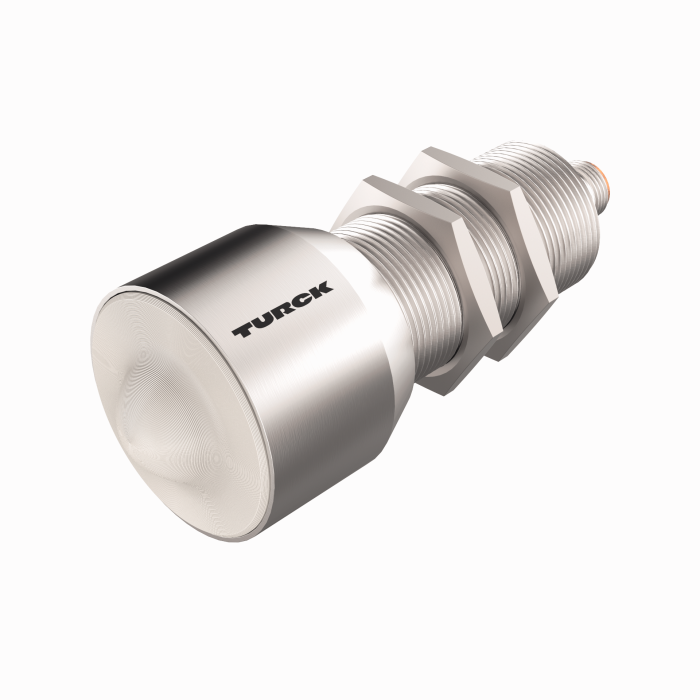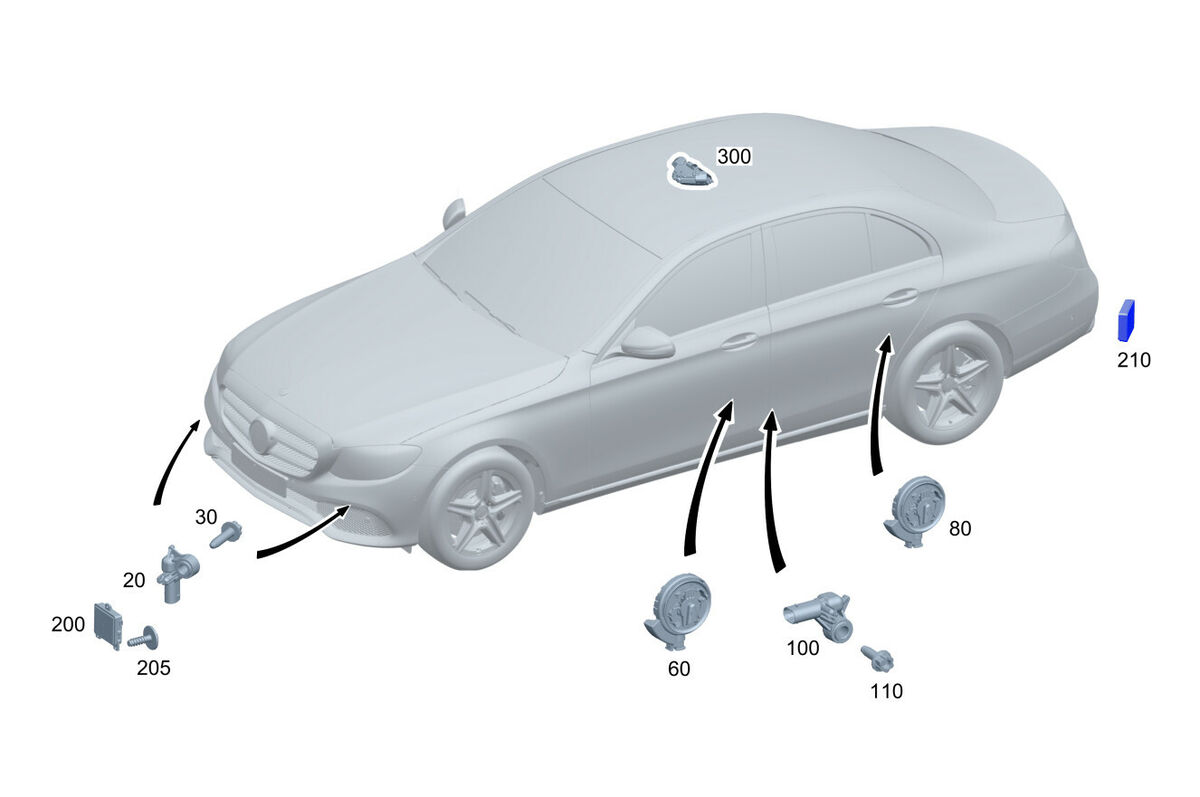I. Introduction: Embarking on a Journey into the Realm of Radar Sensing
A. The Essence of Radar Sensors: Perceiving the Invisible
Unlike traditional sensors reliant on light or sound, radar sensors offer a superpower – the ability to “see” through obstacles, fog, and darkness. These unsung heroes of modern technology provide a clear and unobstructed view of their surroundings, revolutionizing how we perceive and interact with the world. This guide delves into the fascinating world of radar sensors, exploring their principles, applications, and the impact they have on our lives.
B. The Significance of Radar Sensors: A World of Possibilities
Radar sensors have permeated diverse industries and applications, transforming how we live, work, and interact with our surroundings. From self-driving cars and collision avoidance systems to weather forecasting and air traffic control, radar sensors provide real-time data essential for safety, efficiency, and innovation.

II. The Fundamental Principles: Understanding the Science Behind Radar
A. The Radar Equation: Unveiling the Mysteries of Signal Detection
The core of radar technology lies in the radar equation, a mathematical formula that describes the relationship between the radar signal’s strength, target characteristics, and the distance to the target. This equation guides the design and operation of radar systems, enabling them to detect and measure the presence and properties of objects in the environment.
B. The Radar Waveform: The Language of Radar Communication
Radar sensors emit electromagnetic waves, typically in the microwave or radio frequency range, to probe their surroundings. The specific waveform of these emissions, such as continuous wave (CW), pulsed Doppler, or frequency-modulated continuous wave (FMCW), determines the sensor’s ability to detect and measure various target characteristics.
- Continuous Wave (CW): Offers simplicity but struggles to distinguish between stationary and moving targets.
- Pulsed Doppler: Utilizes short bursts of radar waves, enabling the detection of target movement and velocity.
- Frequency-Modulated Continuous Wave (FMCW): Employs a continuously changing frequency, providing high resolution and accurate distance measurement.
C. The Radar Processing: Making Sense of the Echoes
When a radar signal encounters an object, it reflects back to the sensor, carrying information about the target’s location, velocity, and other characteristics. The radar system processes these reflected signals, known as echoes, using techniques like matched filtering, Doppler processing, and beamforming to extract meaningful data.
- Matched Filtering: Identifies specific target echoes amidst noise by comparing them to a known reference signal.
- Doppler Processing: Analyzes the shift in frequency of the reflected echoes to determine the target’s velocity relative to the sensor.
- Beamforming: Focuses the radar signal in a specific direction, enhancing target detection and reducing interference.

III. The Radar System Components: A Closer Look at the Players
A. The Transceiver: The Heart of the Radar System
The transceiver is the backbone of the radar system, generating, transmitting, and receiving radar signals. It consists of a transmitter that produces the radar waveform and a receiver that amplifies and processes the reflected echoes. The transceiver’s performance is crucial for the overall sensitivity and range of the radar system.
B. The Antenna: The Radar’s Eye
The antenna acts as the radar’s eye, directing and focusing the radar waves towards the target area. It plays a critical role in determining the radar’s field of view, beamwidth, and directivity, influencing its ability to detect and track targets accurately. Different antenna designs offer unique characteristics:
- Parabolic Reflectors: Offer high gain and narrow beamwidth, ideal for long-range applications.
- Slotted Arrays: Provide electronically controlled beams, enabling agile scanning and target tracking.
- Phased Arrays: Utilize multiple radiating elements to electronically steer the beam, offering superior flexibility and performance.
C. The Signal Processor: The Radar’s Brain
The signal processor is the radar’s brain, responsible for extracting meaningful information from the raw echoes received by the antenna. It employs sophisticated algorithms and techniques to filter noise, identify targets, estimate their range, velocity, and other characteristics. The signal processor’s performance is essential for the radar’s accuracy, reliability, and ability to operate in complex environments.

IV. Radar Applications: A World of Possibilities
A. Automotive Applications: Enhancing Safety and Autonomy
Radar sensors play a pivotal role in automotive applications, contributing to advanced driver-assistance systems (ADAS) and autonomous vehicle technologies. They are used for:
- Collision Avoidance Systems: Detect obstacles and warn drivers of potential hazards, preventing accidents.
- Adaptive Cruise Control: Maintains a safe distance from the vehicle in front, enhancing highway driving comfort.
- Lane Departure Warning: Alerts drivers when they unintentionally stray from their lane, promoting safe driving habits.
- Blind-Spot Detection: Monitors areas not visible in the mirrors, preventing collisions with vehicles in blind spots.
-
- Enhanced performance: Improved range, resolution, and accuracy through advanced technologies.
- Reduced cost and size: Making radar sensors more affordable and integrable into a wider range of applications.
- Integration with other sensors: Combining radar with other sensor technologies like cameras and LiDAR for richer environmental understanding.
B. Aerospace Applications: Ensuring Safety in the Skies
In the realm of aerospace, radar sensors are indispensable tools for:
- Air Traffic Control: Track aircraft movements in real-time, ensuring safe separation between them.
- Weather Forecasting: Detect and monitor weather patterns like rain, snow, and turbulence, enabling safe flight planning.
- Aircraft Safety: Provide ground proximity warning systems and terrain following/avoidance radar, enhancing safety during landing and takeoff procedures.
C. Security and Surveillance Applications: Protecting People and Assets
Radar sensors are widely employed in security and surveillance applications, providing:
- Perimeter Protection: Detect unauthorized access attempts around sensitive areas like airports, government facilities, and critical infrastructure.
- Intrusion Detection: Monitor for movement within restricted areas and trigger alarms upon unauthorized entry.
- Border Security: Enhance border security by detecting and tracking illegal crossings and suspicious activity.
D. Industrial Applications: Optimizing Processes and Enhancing Efficiency
In industrial settings, radar sensors are used for a wide range of applications, including:
- Level Measurement: Accurately measure the level of liquids or bulk solids in storage tanks and silos, ensuring optimal inventory control.
- Material Flow Monitoring: Monitor the flow of materials on conveyor belts or through pipelines, optimizing production processes.
- Proximity Sensing: Detect the presence and position of objects for automated material handling and collision avoidance in robots.
- Traffic Management: Optimize traffic flow within warehouses and distribution centers, improving efficiency.

V. Advanced Radar Technologies: Pushing the Boundaries
A. Millimeter-Wave (mmWave) Radar: High Resolution and Short-Range Applications
Millimeter-wave (mmWave) radar operates at higher frequencies, offering exceptional resolution and accuracy. These sensors are ideal for short-range applications like:
- Automotive ADAS and autonomous vehicle technology: Providing precise data for obstacle detection and tracking at close range.
- Indoor applications: Motion detection and object tracking within buildings for security and automation purposes.
B. Synthetic Aperture Radar (SAR): Imaging Beyond Line of Sight
Synthetic Aperture Radar (SAR) utilizes advanced signal processing techniques to create high-resolution images of the Earth’s surface, even through clouds and vegetation. SAR applications include:
- Remote sensing: Monitoring environmental changes, mapping land cover, and detecting natural disasters.
- Military applications: Creating high-resolution maps of enemy territory and detecting hidden objects or activities.
C. Multi-Static Radar Systems: Expanding Coverage and Detection Capabilities
Multi-static radar systems employ multiple transmitters and receivers, significantly expanding coverage and enhancing target detection capabilities. These systems are used for:
- Wide-area surveillance: Monitoring large areas like coastlines or borders for security or environmental monitoring purposes.
- Improved target tracking: Providing more accurate target location and tracking data, especially in complex environments with clutter.

VI. The Future of Radar Sensors: Continued Innovation and Expansion
With ongoing advancements in miniaturization, signal processing, and material science, radar sensors will continue to evolve and expand their reach. Here are some exciting possibilities for the future.
